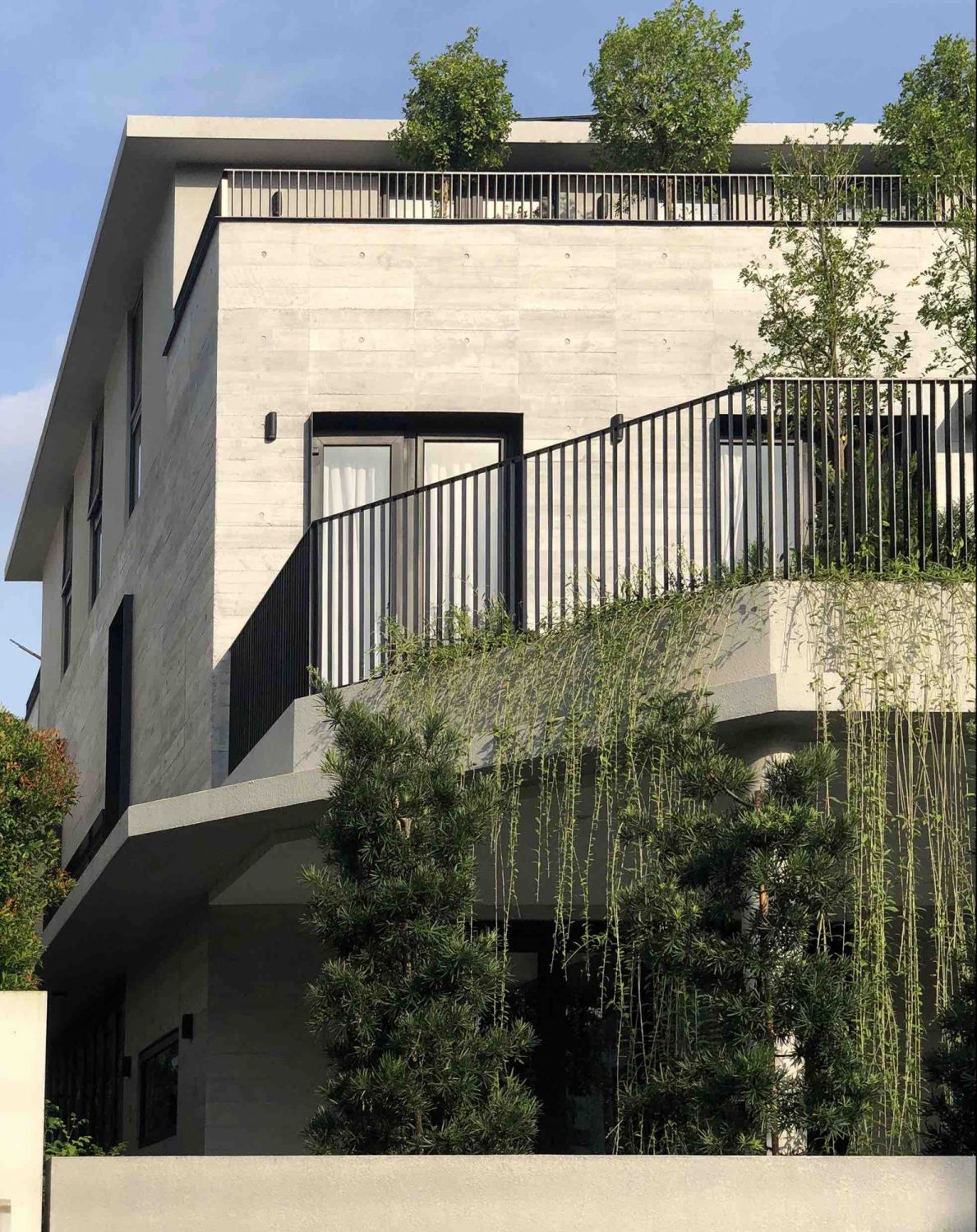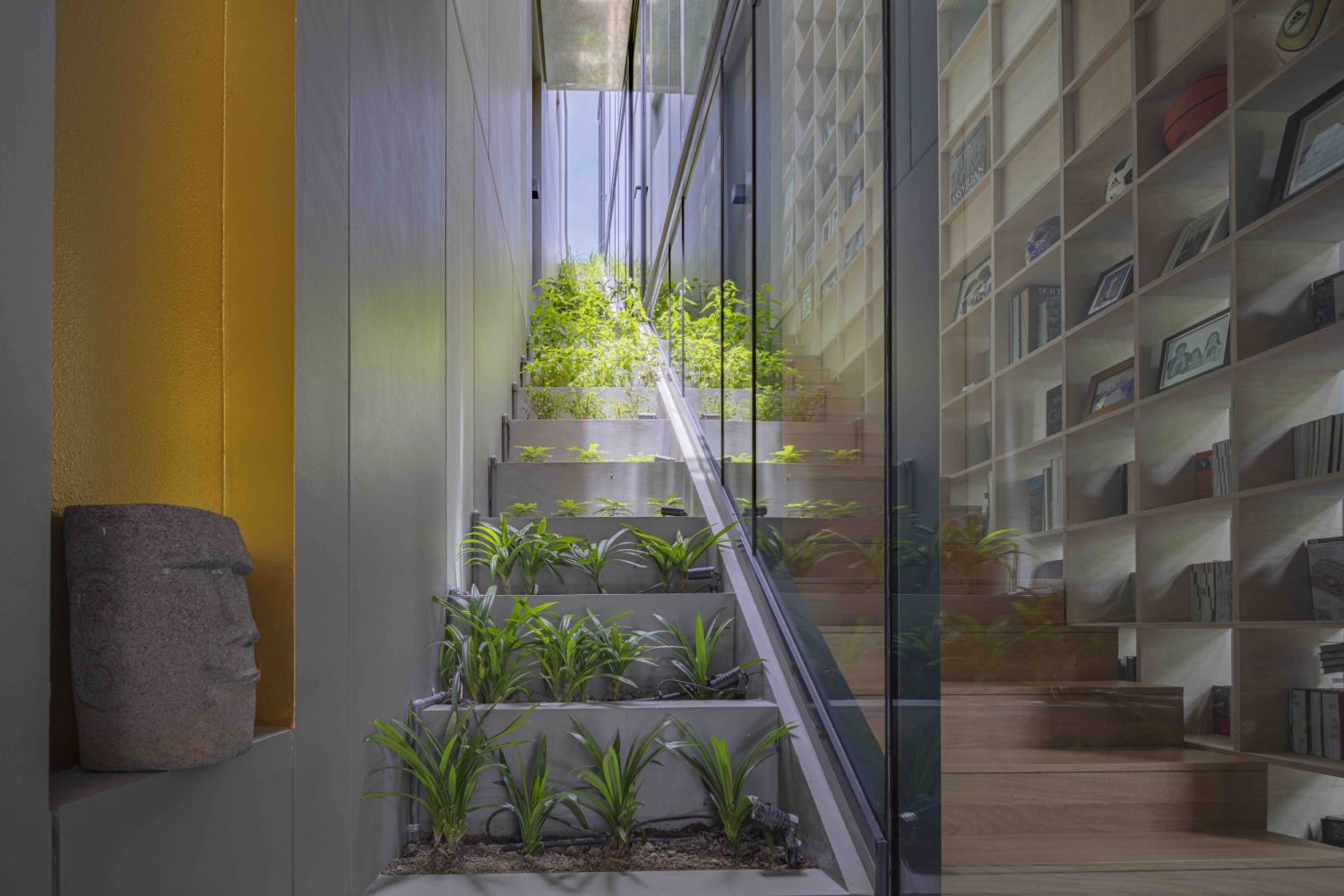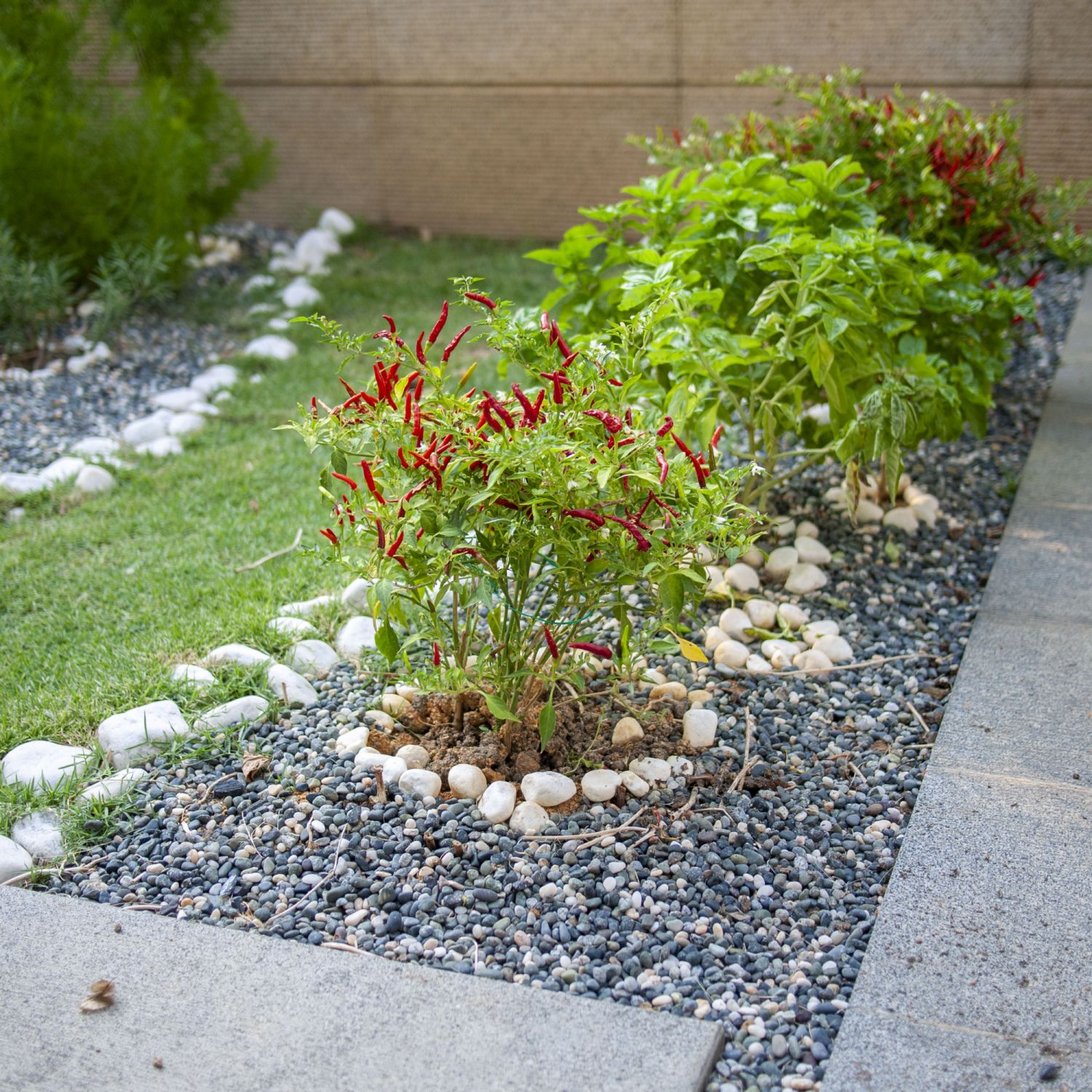From green walls, rooftop gardens to landscaped areas edible plants, experts offer homeowners some tips on how to create green features that thrive and grow well in our tropical climate
In the House of Trees designed by L Architects, there are 12 trees nestled among lush planting on the facade. They form a passive barrier against the bustle of the heavily trafficked road outside the house, as well as lower the ambient temperature indoors.
Don’t Miss: 9 Stunning Hong Kong Homes With Lush Gardens and Beautiful Terraces
“Generally, the post-pandemic world has led people to have a greater appreciation for nature, as they realise how impactful it is,” says L Architects’ founder Lim Shing Hui on her client’s openness to the concept. Confined in their homes during lockdowns, homeowners around the world found increasing respite in nature, be it in their gardens, or via potted plants on their balconies and throughout their interior.
But creating an environment for plants to thrive requires work and understanding of suitable conditions. Here, architects highlight a few key features of note.
1. Water Works

Work closely with your architect and landscaping firm on a self-irrigation system for more complex home gardens, such as the design featured in House of Trees, to ensure that your plants get sufficient water throughout the week.
“You need to plan for a good water-feeding system. For example, a self-irrigation system via a timer because you might not have the time to feed the plants water manually. In fact, the drip line system helps to save more water compared to self-watering,” Lim of L Architects explains.
In Case You Missed It: 5 Modern Tropical Malaysian Homes with Lush Gardens







